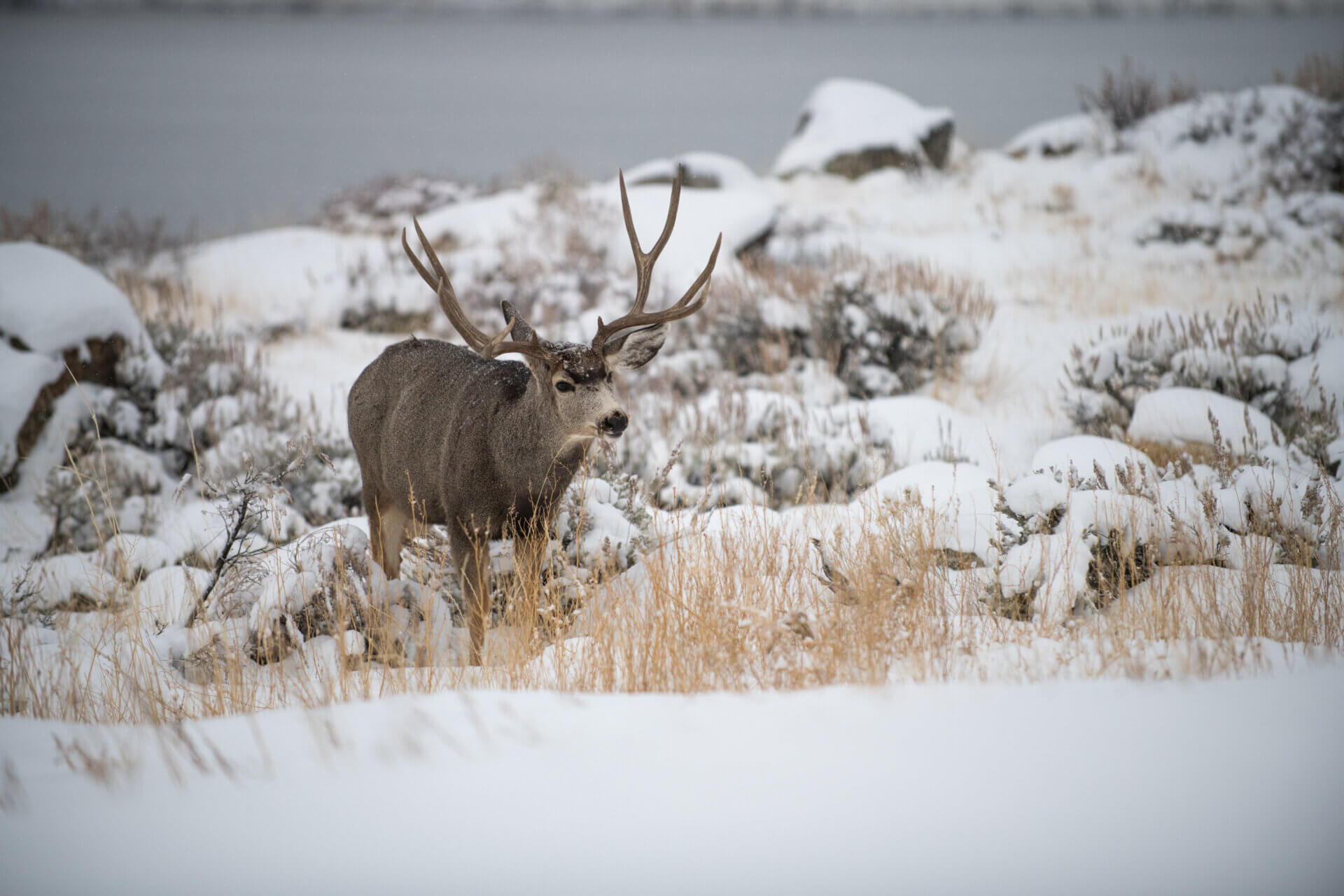
Wyoming Migration and Open Landscapes
Conservation easements play a critical role in preserving mule deer and ungulate migration routes in the Greater Yellowstone Ecosystem, where large-scale seasonal migrations are essential for the animals’ survival. Mule deer, in particular, depend on long migrations to access vital resources, and far more mule deer are migrators than non-migrators, often using the same paths year after year to travel between seasonal ranges (see map). Conservation easements in Sublette County and the Green River Basin help to ensure that these pathways remain intact and can support the seasonal nutrition and movement needs of mule deer.
This map demonstrates how a select few individuals from different mule deer herds in the Green River Basin move between summer ranges in the mountains and winter ranges in the high desert. Collar data was compiled and analyzed by the Wyoming Migration Initiative and shows that deer use very similar paths for spring and fall migrations. Knowing these patterns and movement routes helps the GRVP focus its resources on conserving private properties that provide indispensable migration habitat.
Stable mule deer populations depend on individual deer’s ability to survive winter and successfully reproduce in the spring. In the spring and summer, mule deer ascend to higher elevations where lush, nutrient-rich vegetation is abundant, helping does recover from harsh winter conditions ahead of birthing fawns and helping all deer build fat reserves for the colder months. As winter approaches, deer migrate to lower elevations, where snow cover is less intense, and food sources are more accessible. Conservation easements protect these vital feeding grounds from development, ensuring that mule deer can continue to access the nutritional resources they need at each stage of their migration.
Equally important is habitat connectivity, which guarantees that mule deer can move freely between seasonal ranges. Migration corridors can span hundreds of miles, crossing private lands, roads, and other human-made barriers. Fragmented habitats can reduce access to food, increase mortality, and limit reproductive success. By conserving large, contiguous landscapes, easements prevent habitat fragmentation, allowing for uninterrupted migration.
Seasonal timing is another critical factor in mule deer migrations. Deer are highly attuned to environmental cues, such as temperature and plant growth, that trigger their movement. Spring snow cover naturally recedes in a south to north direction, and mule deer have demonstrated a behavior known as “surfing the green wave”, where they time their northwards migration to access spring forage when it has the highest nutritional content. Protecting migration corridors ensures that mule deer can follow these natural rhythms without disruption, enabling them to arrive in the right places at the right time to maximize the use of their habitats.
Mule deer have evolved so most individual deer use almost the exact same route every year. The loss of those familiar paths is not something that can be easily adapted to, and deer can lose access to vital nutrition in preparation for winter and be unable to take advantage of peak forage conditions when recovering in the spring. The GRVP protects over 7,600 acres of the Sublette Mule Deer Migration corridor utilized by more than 4,000 deer, one of the largest intact migration corridors in the world. As you travel throughout the Green River Valley this fall, be sure to drive slowly and look carefully for migrating wildlife, especially at dusk and dawn when deer are most active.
